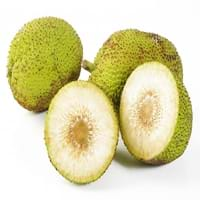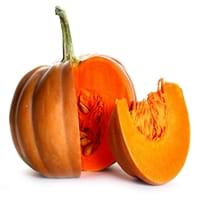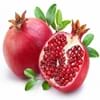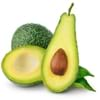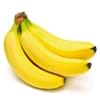Health Benefits
Cancer prevention, Heart care, Maintains healthy cholesterol level, Treatment of skin Diseases
Arthritis treatment, Cancer prevention, High Cholesterol Regulation, Lower blood pressure, Helps Prevent cataract, Prevents gall stones, Ulcer treatment, Weight loss properties
General Benefits
Boosts immune system, Digestive aid, Helps in weight loss, Maintains healthy cholesterol level
Boosts respiratory health, Eliminate parasites and infections, Protects against birth defects, Strengthens bones
Skin Benefits
Anti-aging benefits, Skin rejuvenation, Treatment of skin diseases
Heals sunburn, Hydrates skin, Skin rejuvenation
Hair Benefits
Protects hair, Regulates hair growth, Treatment of dandruff
Regulates hair growth
Allergy Symptoms
Hives, Inflammation of nose, Swelling of mouth, tongue or lips
Abdominal cramps, Anaphylaxis, Digestive Problems, Dizziness, Eczema, Fainting, Hives, Inflammation, Itching, Tingling sensation in wrist and face, Vomiting, Wheezing
Side Effects
Allergic reaction
Kidney and gallbladder diseases
Best Time to Eat
Along with meal, As a snack in the late afternoon, Don't consume at night and before bed, Don't eat after meal
Along with meal, Don't eat after meal, Morning time (before lunch)
Vitamin B5 (Pantothenic Acid)
Vitamin C (Ascorbic Acid)
Vitamin K (Phyllochinone)
Phytosterol
Not Available
Calories in Fresh Fruit with Peel
Not Available
Calories in Fresh Fruit without Peel
Calories in Frozen Form
Not Available
Not Available
Calories in Dried Form
Not Available
Not Available
Calories in Canned Form
Not Available
Calories in Jam
Not Available
Type
Fruit vegetable, Tropical
Berry
Season
All seasons
All seasons
Varieties
Koqo, Tamaikora, Temaipo, Uto Kuro, Samoa, Buco Ni Viti and Kulu Dina
Jarrahdale, Peanut, Lakota, Cow, Sugar, Caribean, Red kuri, Buttercup and Pink lady
Color
White, Yellow
Blue, Green, Orange, Red, White
Inside Color
White
Creamy Yellow
Taste
Bland
Creamy, Soft, Sweet
Origin
South Pacific
Mexico
Soil Type
Loam, Sand, Sandy loam, Well-drained
Clay loam, Sandy loam, Well-drained
Climatic Conditions
Humid, Rainfall, Warm
Warm to hot climate
Facts about
- The milky sap of breadfruit tree is used as glue & bark is used to make papers.
- Breadfruit tree produces 1st fruit after 2-3 years from planting & remains productive for decades.
- The seeds of breadfruit are edible.
- The name pumpkin has its roots in the Greek word ‘pepon’, meaning ‘large melon’.
- The largest pumpkin ever grown weighed 1,140 pounds.
- Pumpkins were once known for removing freckles & curing snake bites.
Top Producer
Jamaica
China
Other Countries
Africa, India, United States of America
Egypt, India, Indonesia, Iran, Italy, Mexico, Russia, Spain, United States of America
Top Importer
United States of America
United States of America
Top Exporter
Jamaica
China
Botanical Name
Artocarpus altilis
Cucurbita maxima
Synonym
Artocarpus communis or Artocarpus incisa
Cucurbita pepo, Squash
Subkingdom
Tracheobionta
Tracheobionta
Division
Magnoliophyta
Magnoliophyta
Class
Magnoliopsida
Magnoliopsida
Subclass
Magnollidae
Dillenhidae
Order
Rosales
Cucurbitales
Family
Moraceae
Cucurbitaceae
Genus
Artocarpus
Cucurbita
Species
A. altilis
Cucurbita mixta
Generic Group
Mulberry
Not Available
Compare Breadfruit and Pumpkin
It is important compare Breadfruit and Pumpkin as both the fruits have a different nutritional value. Their comparison can be done on the basis of their vitamin and mineral content, calories, benefits as well as characteristics, making it easier for us to choose the best fruit for our diet. Their general health benefits are as follows:
Breadfruit Benefits: boosts immune system, digestive aid, helps in weight loss and maintains healthy cholesterol level.
Pumpkin Benefits: boosts respiratory health, eliminate parasites and infections, protects against birth defects and strengthens bones.
Fruits are also used as a remedy for various hair problems. The hair benefits of Breadfruit are: protects hair, regulates hair growth and treatment of dandruff and hair benefits of Pumpkin are: regulates hair growth. Some fruits are known to cause allergic reactions. The allergy symptoms of first fruit are: hives, inflammation of nose and swelling of mouth, tongue or lips and the symptoms of second fruit are: abdominal cramps, anaphylaxis, digestive problems, dizziness, eczema, fainting, hives, inflammation, itching, tingling sensation in wrist and face, vomiting and wheezing. Get sorted Breadfruit vs Pumpkin comparison with the help of fruit comparison tool by fruitvs.com.
